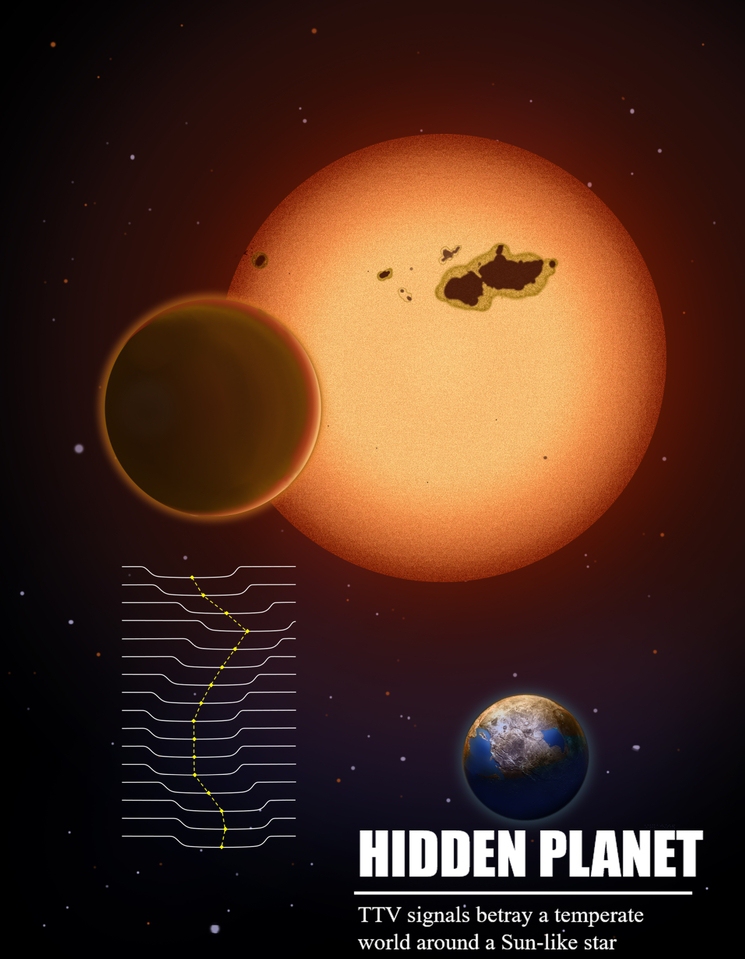
An illustration of Kepler-725c (Photo/Yunnan Observatories of the Chinese Academy of Sciences)
Are we alone in the universe, and does another planet exist that could support life like Earth? It is an ancient question that has long captivated humanity. For the first time, an international collaboration led by Chinese researchers with the Yunnan Observatories of the Chinese Academy of Sciences has adopted the Transit Timing Variation (TTV) technique and detected the presence of a super-Earth codenamed Kepler-725c within the habitable zone of the Sun-like star Kepler-725, which is a promising candidate for potential habitability.
The breakthrough was published in the journal Nature Astronomy on Tuesday. And the discovery based on the TTV technique offers a new approach to detecting exo-Earths, making the technique a powerful tool for discovering “invisible planets” in the habitable zones of sun-like stars. It also provides new observational targets and technical support for upcoming Chinese astronomical projects, such as the China Space Station Telescope (CSST) and the Earth 2.0 (ET) project, Global Times learned from the Yunnan observatories on Wednesday.
According to the study, Kepler-725c has a mass approximately 10 times that of Earth and orbits its host star every 207.5 days, a period comparable to Earth’s own. And more crucially, the planet lies within the habitable zone of its host star, the region around a star where the temperature is suitable for liquid water to exist.
"By analyzing the TTV signals of Kepler-725b, a gas giant planet with a 39.64-day period in the same system, the team has successfully inferred the mass and orbital parameters of the hidden planet Kepler-725c," Sun Leilei, the first and co-corresponding author of the study, from the Yunnan observatories, told the Global Times on Wednesday.
Unlike the transit method and radial velocity methods, the TTV technique is not subject to their specific observational challenges. Instead, it can indirectly detect the presence of a planet by analyzing the TTVs of another known planet in orbital resonance with it, Sun said. "It demonstrates the potential of the TTV technique to detect low-mass planets in habitable zones of sun-like stars," Sun added.
Global Times also learned from the Yunnan observatories that the research was jointly conducted by the Yunnan Observatories of the Chinese Academy of Sciences, Xi'an Jiaotong-Liverpool University, Nanjing Institute of Astronomical Optics and Technology, and Hamburg Observatory.